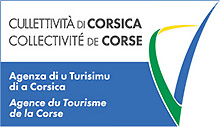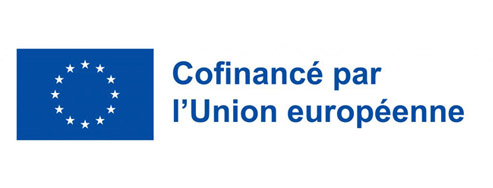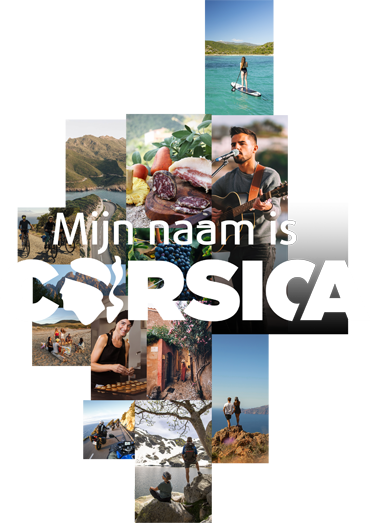Rechercher...
Ontdek Corsica
Mijn verblijf in Corsica
Cultural heritage
The villages of Corsica are dotted with Genoese towers, prehistoric ruins and fortified bastions...
History is engraved in the very stones of this unique island.
Built to defend the island against attackers during the Genoese occupation, Corsica’s Genoese towers can be seen all over the island and are a reminder of this important period of its history.
Many of these towers are being restored and those open to the public include the Tour de Porto, Tour de Capitello, and Tour de la Parata. Also of interest is the Genoese bridge which spans the Golo river in the village of Ponte Golo, the site of a famous battle between the troops of Pasquale Paoli and the King of France in 1769.
Evidence of Italian military genius can be seen across Corsica, which is dotted with citadels, forts and bastions. One of the best examples is the citadel at Calvi, which is marked by the island’s long struggle for liberty with its stone fortifications, imposing keep and drawbridge overlooking the sea.
As you explore the island’s history, you’ll discover the Genoese forts at Matra, Girolata and Saint-Florent. Admire the old fortifications at Porto-Vecchio, a fine example of Ligurian architecture, and contemplate the ruins of Filitosa, an important prehistoric site dating back 8,000 years which is famous for its menhirs and other fascinating remains. Also of major historical significance are the archaeological sites of Capula and Cucuruzzu in Levie in the heart of the Alta-Rocca, both of which are listed by the “monuments historiques” association – Cucuruzzu is accessed via a delightful track lined with ancient oaks, tall pines and sweet chestnut trees. Finally, the Ancient town of Aléria is not to be missed, with its Greek ramparts, pre-Roman necropolis and Roman villa.
These intriguing sites and monuments are marked by the passing of time and bear witness to the island’s rich history.
Museums and exhibitions
Corsica is a land of culture which rewards the curious traveller.
Our many museums are home to remarkable exhibits which bear witness to the passing of time and the island’s history.
The Musée de Bastia has a collection of 10,642 art exhibits and documents, the Palais Fesch in Ajaccio boasts the largest collection of Italian paintings in France after the Louvre, while Napoleon’s birthplace, in Ajaccio’s old town, will reveal myriad secrets about the family of the island’s most illustrious son. Take a short walk through the town to visit the Bibliothèque Fesch, a library with a unique collection of incunabula. As you enter this temple of learning, you can’t fail to be impressed by the gaze of two plaster lions, moulded from original sculptures by Canova which grace the tomb of Pope Clément XIII at St Peter’s in Rome.
In Sartène, the Musée de la Préhistoire boasts major collections illustrating the daily life of past civilisations on the island, while the museum in Aléria, occupying the Fort de Matra, displays items unearthed during excavations of the Ancient colony and necropoli. Meanwhile, in Corte, admire old photographs and exhibits relating to the island’s ethnology and history at the Musée de la Corse. This renowned museum evokes the traditional life of shepherds and farmers, the development of local customs and beliefs, as well as the different aspects of contemporary life on the island.
Film buffs will also be keen to head to the Cinémathèque de Porto-Vecchio, which hosts a full programme of screenings, exhibitions and conferences.
Religious heritage
Places of worship with striking aesthetic and architectural qualities
With its strong Latin roots, Corsica is striking for the beauty of its religious buildings.
Almost everywhere on the island seems to be home to a small church or cathedral. Near Bastia, the Santa Maria Assunta church, popularly known as “A Canonica”, is a former 12C Pisan-style basilica and a veritable masterpiece of sobriety. The Église Saint-Jean-Baptiste, the largest parish church on Corsica, rises proudly above the old port of Bastia. From its lofty and theatrical façade, it observes the daily lives of the city’s inhabitants. On the west coast of the island, Ajaccio’s ochre-coloured cathedral was the setting for the baptism of Napoleon in 1771, and as such is one of the pride and joys of this Imperial City.
In Murato, in the Nebbiu region, you’ll come across one of Corsica’s most beautiful churches, the Romanesque Église San Michele, whose unique and original decor impresses its many visitors.
All these places of worship are striking for their aesthetic and architectural qualities, their harmonious interiors inspiring the development of the island’s humanist vision. A fascinating tour exploring these admirable buildings bequeathed by centuries of different civilisations cannot fail to captivate visitors to the island.


powered by cd-media.fr



